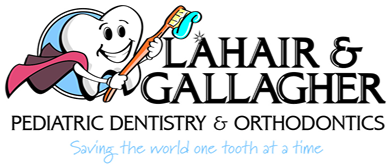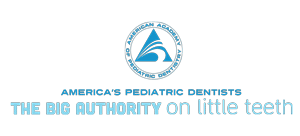

New Patient Forms:
New Patients, save time by printing out and completing the forms below before your first visit.
Contact and Insurance Information
Authorization to Release Information
Children's Oral Health Issues
Tooth Eruption
The first baby teeth come into the mouth are the two bottom front teeth. You may notice this when your baby is about 6 to 8 months old. Next to follow will be the four upper front teeth, and the remainder of your baby's teeth will appear periodically. They will usually appear in pairs along the side of the jaw until the child is about 2 ½ years old.
At around 2 ½ to 3 years old, your child should have all 20 teeth. Between the ages of five and seven, the first permanent teeth will begin to erupt. Some of the permanent teeth replace baby teeth and some don't. Don't worry if some teeth are a few months early or late as all children are different.
Baby teeth are important as they not only hold space for permanent teeth, but they are important to chewing, biting, speech and appearance. For this reason it is important to maintain a healthy diet and daily hygiene.
Gum Disease
While many people believe periodontal disease is an adult problem, studies indicate that gingivitis (the first stage of periodontal disease) is nearly a universal problem among children and adolescence. Advanced forms of periodontal disease are less common in children than adults, but can occur.
Chronic gingivitis is also present in children. It can cause gum tissue to swell, turn red, and bleed easily, Gingivitis is preventable and treatable with a regular routine of brushing, flossing, and professional dental care. If left untreated, it can eventually advance to more serious forms of periodontal gum disease.
Localized aggressive periodontitis can affect young healthy children. It is found in teenagers and young adults and mainly affects the first molars and incisors. It can be characterized by the loss of bone. Ironically, patients generally form very little dental plaque or calculus.
Generalized aggressive periodontitis may begin around puberty and involve the entire mouth. It is marked by inflammation of the gums and heavy accumulations of plaque and calculus. Eventually it can cause the teeth to become loose.
Conditions that make children more susceptible to periodontal disease include:
- Type I diabetes
- Down syndrome
- Papillon-Lefevre syndrome
For example, in a survey of 263 Type I diabetics, 11 to 18 years of age, 10% had overt periodontitis.
Adolescence and Oral Care
There is evidence that periodontal disease increase's during adolescence due to lack of motivation to practice oral hygiene. Children who maintain good oral health habits up until the teen years are more likely to continue brushing and flossing than children who were not taught proper oral care.

